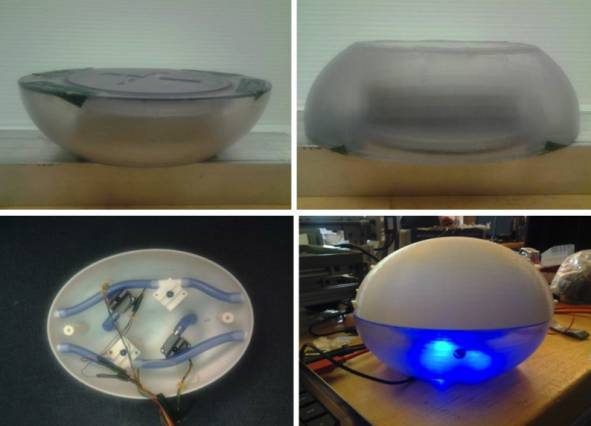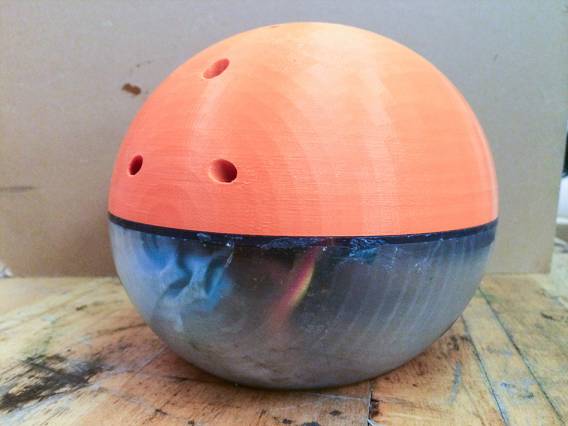These days when you think of pirates, the coast of Somalia, and kidnapping/extortion probably come to mind. There are certainly other forms of piracy, including music, movies & software, or more traditionally, smuggling. The trafficking of illicit goods, or of people into the United States, might see a steep decline if researchers at MIT have their way. A group at the school have developed a small, autonomous underwater robot that can patrol the water surrounding ports and scan ships for contraband.
The robot – roughly football shaped, with one flat side – can propel itself along the sides of a ship and use ultrasound to scan the hull for areas that contraband could be hidden. In most instances, the density or composition of the hull will change in areas used for smuggling. MIT’s robot is inexpensive enough that a small fleet of the robots could patrol and collaboratively scan boats, cutting down on time and manpower while potentially increasing accuracy in checking for illicit goods.

Many of the robot’s parts are 3d printed, which helps keep costs down, which is a bit part of the appeal:
“It’s very expensive for port security to use traditional robots for every small boat coming into the port,” says Sampriti Bhattacharyya, a graduate student in mechanical engineering, who designed the robot together with her advisor, Ford Professor of Engineering Harry Asada. “If this is cheap enough — if I can get this out for $600, say — why not just have 20 of them doing collaborative inspection? And if it breaks, it’s not a big deal. It’s very easy to make.”
Most interesting is the propulsion system:
Half of the robot — the half with the flattened panel — is waterproof and houses the electronics. The other half is permeable and houses the propulsion system, which consists of six pumps that expel water through rubber tubes.
Two of those tubes vent on the side of the robot opposite the flattened panel, so they can keep it pressed against whatever surface the robot is inspecting. The other four tubes vent in pairs at opposite ends of the robot’s long axis and control its locomotion.
Their current prototype can last 40 minutes on a charge, but moving forward they’re hoping to get at least 100 minutes out of the next build. MIT is also considering options for dealing with another sea-faring concern – barnacles and other clingy sealife. Ultrasound works best when the sensors are in direct contact with the object they are scanning. MIT wants to get around this by keeping their robot at an exact distance from the object being scanned. That might seem difficult considering that waves and currents keep any boats, bouys, etc. in near constant motion, but the folks at MIT are awfully smart. I have a feeling they’ll come up with something.
[button link=”http://newsoffice.mit.edu/2014/underwater-robot-for-port-security-0926″ icon=”fa-external-link” side=”left” target=”blank” color=”285b5e” textcolor=”ffffff”]Source: MIT.edu[/button]
Last Updated on November 27, 2018.











Comments are closed.